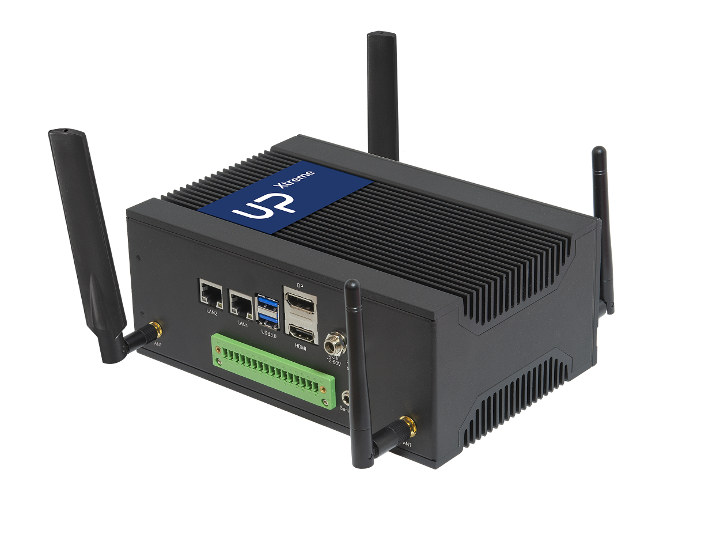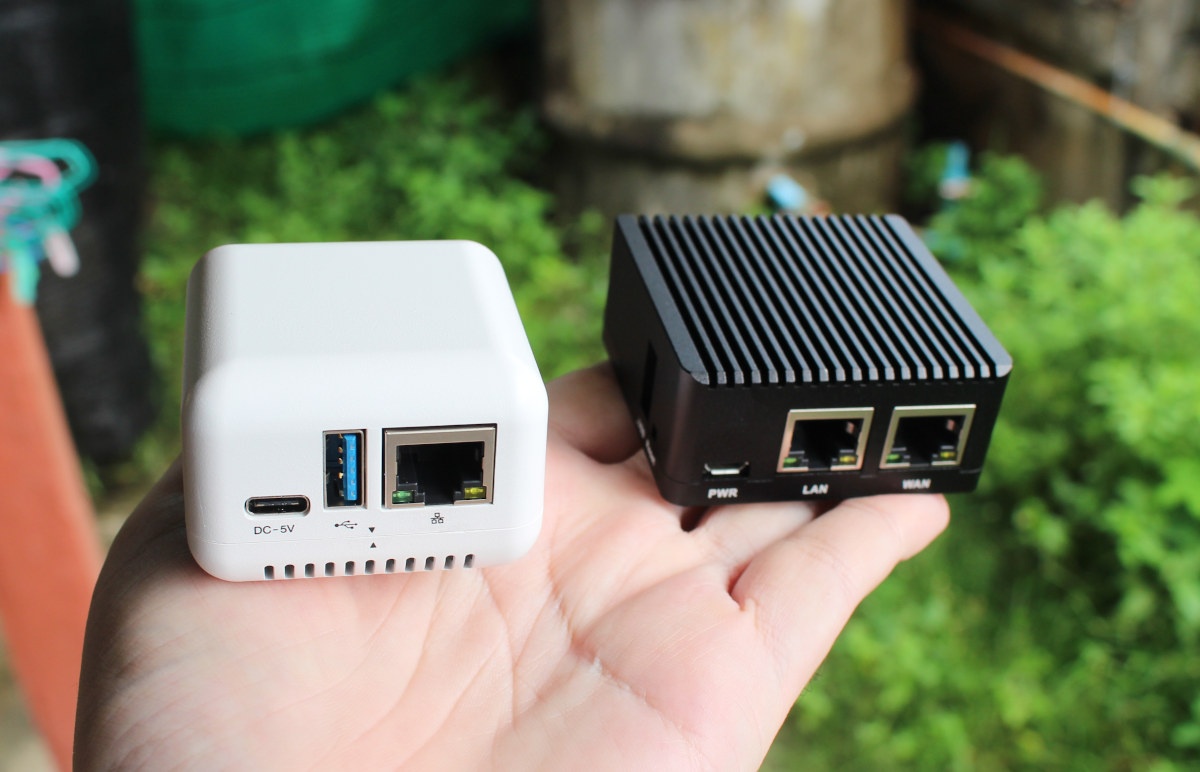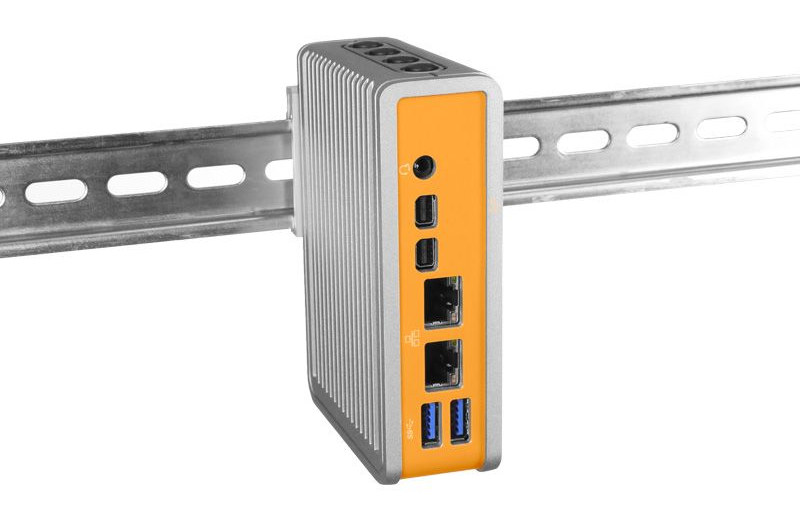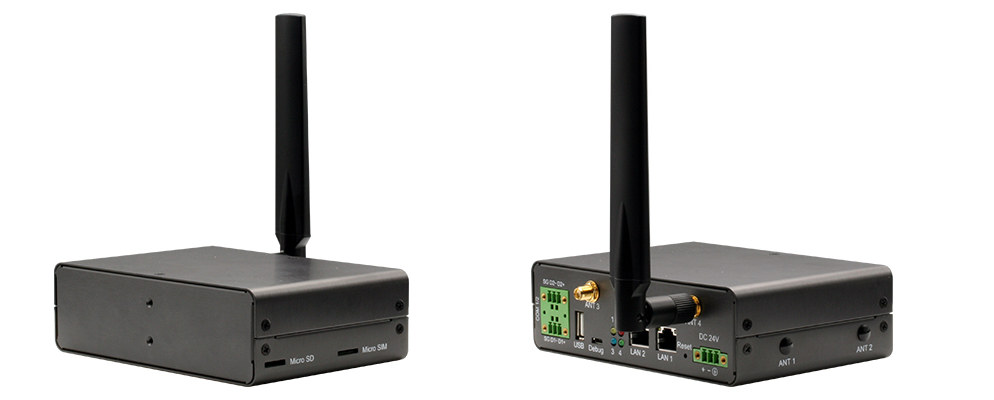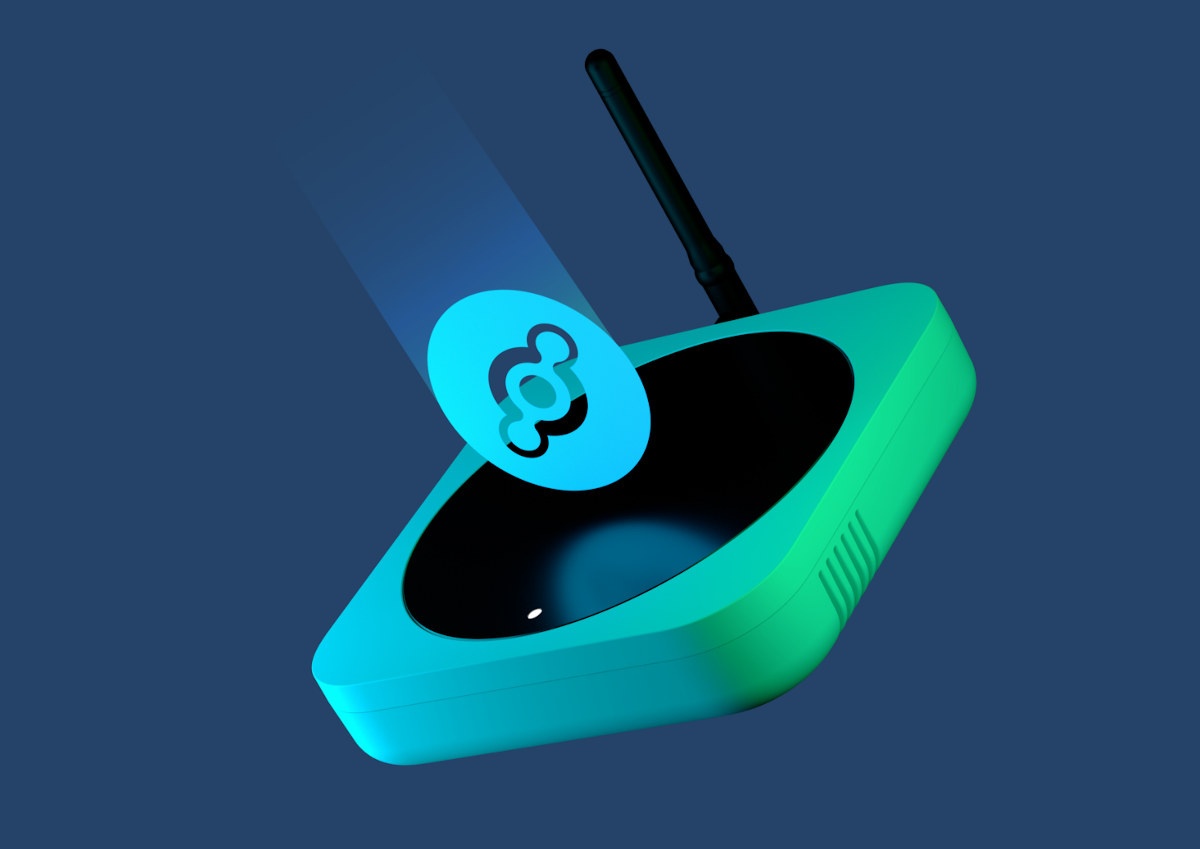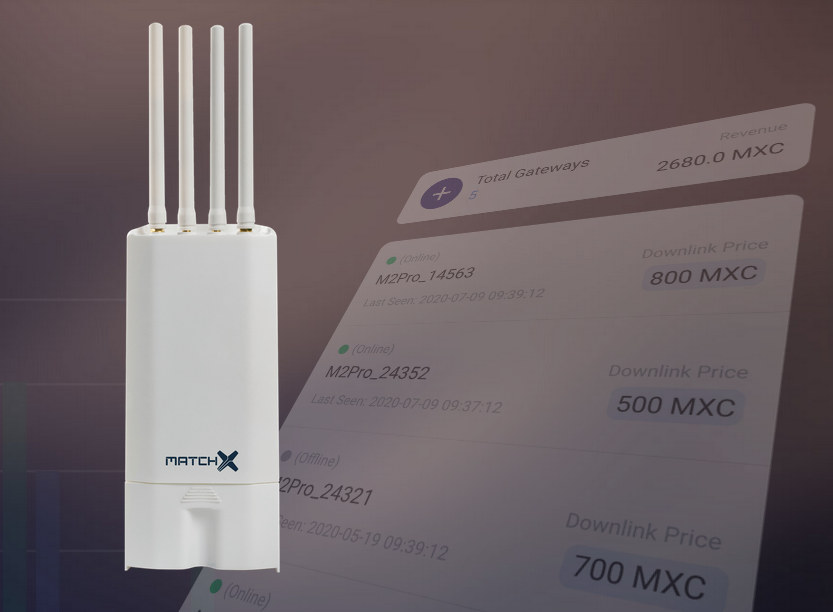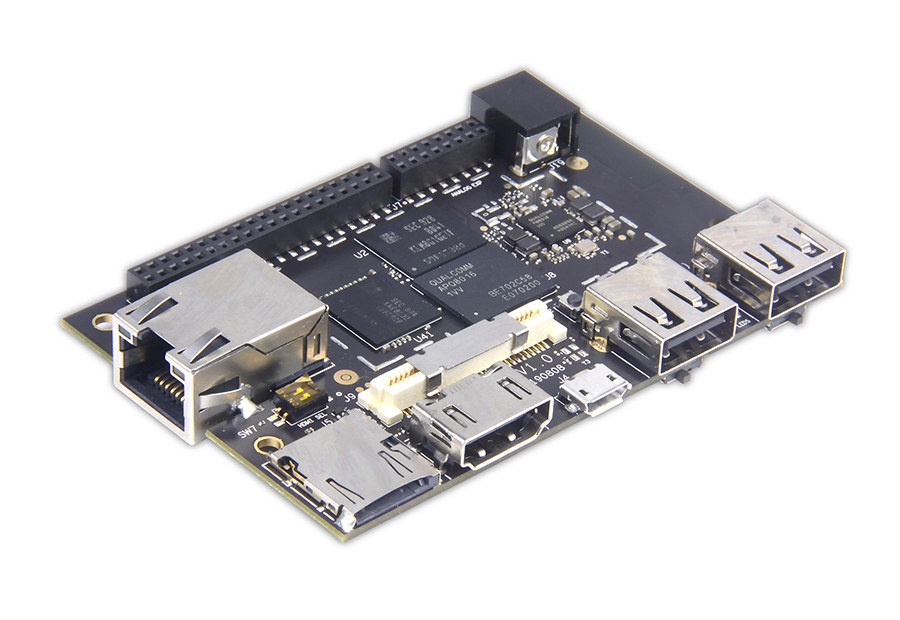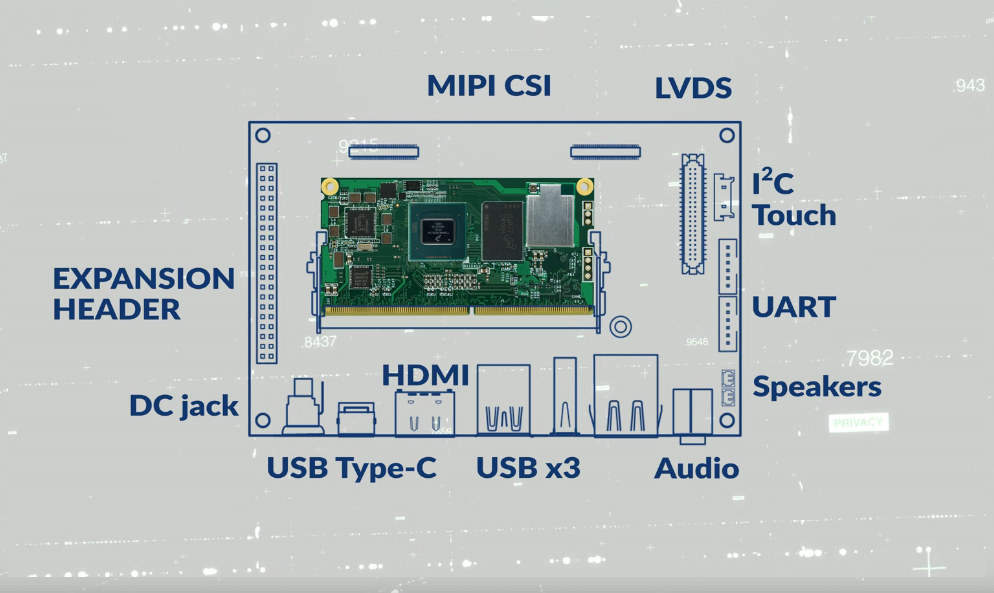AAEON UP Xtreme Edge (UPX-Edge) is a rugged embedded computer built around the company’s UP Xtreme SBC with a choice of 15W Whiskey Lake-U processors ranging from Celeron 4305UE to Core i7-8665UE, and optional Intel Movidius X AI accelerator cards. We previously noted the company had launched UP Xtreme Smart Surveillance kit integrating Milestone video management software (VMS) and SAIMOS video analytics software to the embedded computer. AAEON has now partnered with another company – AOTU.AI – to announce the launch of the BrainFrame Edge AI Developers Kit (DevKit) aiming to help developers and system integrators to rapidly create and deploy Smart Vision applications. The solution relies on UP Xtreme Edge mini PC fitted with an Intel Core i5-8365UE processor and 16GB RAM, 64GB eMMC flash, and two Intel Movidius Myriad X VPUs. We’ve also gone through Up Xtreme Edge specifications, so let’s instead focus on the software. This is […]
NanoPi NEO3 and NanoPi R2S Gateways Review – Part 1: Unboxing & Teardown
This morning I received a message from DHL informing me of an incoming package from Hong Kong and sent by a company (i.e. an agent) I had never heard of. My first reaction was “Ah” shortly followed by “Why?!”. But in any case, I’ve just received the package, and after tearing the plastic out, I found a FriendlyELEC branded package. So I thought to myself it must be a NanoPi board for review. Wrong! I actually got two NanoPi “boards” namely NanoPi NEO3 with 2GB RAM, and NanoPi R2S both of which are Rockchip RK3328 powered SBC’s designed for Linux headless applications. Unboxing After opening both packages, I realized I did not get the SBC versions, but instead the complete gateways with their respective enclosure. NEO3 is really light since the case is in plastic, while R2S is a bit heavier due to the metal case. NanoPi NEO3 gateway comes […]
OnLogic Introduces Fanless Apollo Lake Thin Clients Running IGEL Edge OS
OnLogic has launched its first two offerings as part of the new IGEL Ready program with IGL200 and IGL300 fanless thin clients powered by various Intel Apollo Lake processors. IGEL Edge OS enables the devices to be used for distributed computing, virtualization, and thin clients, and OnLogic thin clients target users in the manufacturing, energy, automation, and industrial Internet of Things (IIoT) sectors. OnLogic IGL200 Specifications: SoC – Intel Celeron N3350 dual-core Apollo Lake processor @ 1.1 GHz / 2.4 Ghz (Burst freq.) with Intel HD Graphics 500 System Memory – Up to 4GB LPDDR4-2133 Storage – 32GB eMMC flash, MicroSD Card slot, mSATA slot Video Output – 2x Mini DisplayPort outputs with dual independent display support Audio – 1x audio Jack with Line-out and Mic-in Networking 2x Gigabit Ethernet ports via Realtek RTL8111G controller 4x antenna holes for optional cellular modem or/and WiFi USB – 1x USB 2.0 port, […]
Edge IoT Gateway Powers Networks in Smart Factories, Smart Cities
In case you wonder if Arm Cortex-A8 processors are still getting used in new products, you’ll be glad to learn AAEON has just launched SRG-3352 Edge IoT Gateway based on an unnamed Arm Cortex-A8 processor @ 800 MHz and designed to power networks for Smart Factories, Smart Cities, and more. AAEON SRG-3352 specifications: SoC – Unnamed Arm Cortex-A8 800 MHz RISC processor, possibly Texas Instrument Sitara AM335x processor System Memory – 1GB DDR3L Storage – 8GB eMMC flash, MicroSD slot Connectivity 2x Gigabit Ethernet (RJ45) Optional 802.11b/g/n/ac WiFi 5 and Bluetooth 4.2 via USB port Optional NB-IoT or 3G/4G LTE via mini PCIe card; SIM card socket Serial Ports – 2x RS-485 interface via Phoenix terminal blocks or D-Sub connectors USB – 1x USB 2.0 port, 1x Micro USB 2.0 port Misc – RTC with CR2032 Lithium battery, 4 user LEDs, Reset button, optional VGA output Power Supply – 9-30V […]
Helium Hotspot LoRaWAN Gateway also Earns Cryptocurrency
We covered MatchX M2 Pro LPWAN Crypto-miner yesterday, and at first, I really thought that combining LoRaWAN gateway with cryptocurrency mining was really just a gimmick. But after talking with others, I found out that MXC Foundation HashDash used with the MatchX gateway was not the only such solution, and I was introduced to Helium Hotspot. A Helium Hotspot is a LoRaWAN gateway that also allows you to earn HNT cryptocurrency, and it could more than just prove a way to fund the deployment of public LoRaWAN networks, as as we’ll see below some people or companies are making some serious money, while others not so much. A DIY Helium Hotspot can also be made from a Raspberry Pi 3/4 and a RAK2245 Pi HAT. Helium Hotspot key features and specifications: SoC – Quad-core Arm Cortex-A53 application processor System Memory – 1GB RAM Storage – 64GB Storage Connectivity Ethernet Dual-band […]
MatchX M2 Pro LPWAN Crypto-Miner Supports LoRaWAN and Cryptocurrency Mining
A few years ago, I received MatchX.io MatchBoX outdoor LoRaWAN gateway for review, and eventually tested it with RAK811 LoRa tracker once I got a node to play with, and made sure I did not break any local laws. But now the company has come up with an unusual gateway with its MatchX M2 Pro LPWAN Crypto-Miner that acts as a traditional LoRaWAN gateway, as well as a cryptocurrency miner. I’m a bit perplexed by the solution as miners are notoriously power-hungry, but let’s have a look. MatchX M2 Pro specifications: SoC – NXP i.MX 6UL (MCIMX6G2CVM05AB) single-core Arm Cortex-A7 processor @ up to 528MHz System Memory – 256MB DDR3 RAM Storage – 256MB NAND FLASH, optional SSD up to 32GB or industrial SD-Card Networking & Wireless Connectivity LoRa Radio – SX1302 chipsets, 16 frequency channels Supports EU868, US915, AS920, AS923, AU915, KR920, IN865 regions 2.4Ghz 802.11b/g/n WiFi 4 GPS […]
Developer Board 4 V3 Brings Gigabit Ethernet to 96Boards Snapdragon 410E SBC
The original 96Boards CE compliant Dragonboard 410c development board launched in 2015 was followed by Geniatech Developer Board IV the following with many of the same features plus the addition of a Fast Ethernet port and an RTC battery, and an 85x60mm form factor all of which made it non-compliant with the 96Board specs. Geniatech has now introduced a new Developer Board 4 V3 version, that like the V2 model integrates a Gigabit Ethernet port and WiFi 5 connectivity, but the design has been modified get closer to 96Boards CE compliance with 85x54mm dimensions, and the same ports’ arrangement as on 96Boards CE boards, excluding the Ethernet RJ45 jack that is out of (96Boards CE) specs. Geniatech Developer Board 4 V3 specifications: SoC – Qualcomm Snapdragon 410E (APQ8016E) quad-core ARM Cortex A53 processor @ 1.2 GHz with Adreno 306 GPU System Memory – 1 or 2 GB LPDDR3 @ 533MHz […]
Wandboard 8MPLUS SBC Gets NXP i.MX 8M Plus SoC with 2.3TOPS NPU
TechNexion Wandboard Dual was one of the first Freescale i.MX 6 single board computers when it launched in early 2013 and the company has introduced a few more models over the years including Wandboard QuadPlus in 2017. TechNexion is now working on a new version called Wandboard 8MPLUS powered by the recently announced NXP i.MX 8M Plus SoC that features a built-in 2.3 TOPS NPU for AI acceleration. Wandboard 8MPLUS preliminary specifications: EDM System-on-Module SoC – NXP i.MX8M Plus quad-core Arm Cortex-A53 processor @ up to 1.8 GHz, Arm Cortex-M7 real-time core @ up to 800 MHz, Vivante GC7000UL 3D GPU, Vivante GC520L 2D GPU, HiFi 4 audio DSP, and 2.3 TOPS Neural Processing Unit (NPU) System Memory – 2GB or 4GB LPDDR4 Storage – 32GB eMMC flash Video Decode – HD (1080p +720p) Video Encode – 1080p60 H.265, H.264 260-pin EDM Type G board-to-board connector Debugging – JTAG Interface […]

